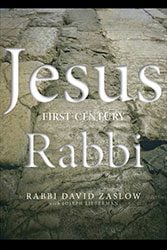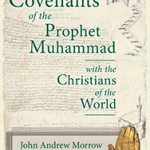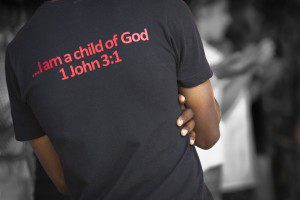“I cannot imagine a Christian whose Christianity would not be greatly enhanced by deepening his or her knowledge of the historical Jesus, the Jewish Jesus and about the religion of Judaism …. Simultaneously, it seems to be the right time for Jews to reclaim Jesus as an authentic Jewish teacher and native son.” — Rabbi David Zaslow, from Jesus: First- Century Rabbi
There have been a number of books written about the historical Jesus from a Christian perspective, but considerably less so from a Jewish perspective. After all, Jesus was a Jew, born into a religion that had been flourishing for thousands of years before he became the Christ for another set of believers. Fueled by an interfaith heart, Rabbi David Zaslow has set out to educate both the Christian and the Jew – and perhaps transform hearts in the process – with his new book Jesus: First-Century Rabbi. He argues that in better understanding the Jewishness of Jesus, we may come to better appreciate our similarities as people of faith, as well as our differences.
We invited Rabbi David Zaslow to respond to some questions about his book and the mystery of the “one Jesus, two understandings” for us at the Patheos Book Club this month.
What inspired you to write this book, at this time?
 Since Vatican II in the 1960’s interfaith events have become commonplace between Protestants, Catholics, Jews, and people of all faiths in the United States. These events often take the shape of sharing beliefs and respectful listening, but rarely rise to the level of celebration of each other’s beliefs. Why?
Since Vatican II in the 1960’s interfaith events have become commonplace between Protestants, Catholics, Jews, and people of all faiths in the United States. These events often take the shape of sharing beliefs and respectful listening, but rarely rise to the level of celebration of each other’s beliefs. Why?
Religious leaders are good at remembering what they don’t like about each other’s theologies. Add that to the memory of historic violence between various religions and cultures, and it’s easy to understand why religions have limited their ecumenical and interfaith goals to tolerance and understand.
I wrote this book because, along with many other Jews and Christians, this seems to be the right time to build an bridge of deeper understanding, and even celebration of each other’s faiths without watering down the unique theological facets of each religion. Because of the advent of travel and technology the world has gotten too small to hide behind old tribal prejudices.
You say in the Introduction that you were uncertain who to write this book ‘for’? Where did you end up on that? Who did you write this book for? And who do you hope reads it?
The book is for Christians, Jews, and people of good faith from all religions who want to learn more about the historical Jesus, and this unique relationship between the Church and Synagogue. My aim has been to reduce the surface friction between Jews and Christians when they speak to each other about theological issues that separate them. But within Christianity and Judaism there are great intra-religious denominational divides as well.
I wrote this book with the sense then it might make a positive contribution to Jewish/Christian dialogue. But it was also written with the sense that an understanding of the historical Jesus could even strengthen the faith of Christians and Jews. My hope is that people of goodwill from both faiths (and other religions as well), will gain some insight into the difference between the historical Jesus and the Christ of the Church, what we refer to as the theological Jesus.
Who do you think will be more surprised by the insights in your book – Christians or Jews? What does this book offer each tradition?
I think that the more traditional the Jews are who read this book, the greater the surprise will be. There is a knee-jerk reaction to the horrors of anti-Semitism and missionaries that have kept Jews from being able to look objectively at Jesus as an historic figure. At the same time many Christian readers will be startled at the extent to which Jesus was completely loyal to his Jewish religious practices. Some Christians have the false impression that he did not observe the Sabbath or kosher dietary laws for example.
The bottom line is that this book offers the faithful in each religion an added spiritual bonus to their already rich traditions. For Jews, this will be to reclaim Jesus as a native son of Judea. An accurate image of the Jesus of history will offer Christians a window into their own roots, and offer them the possibility to study the actual texts that Jesus likely studied, and to become familiar with the teachers that Jesus was influenced and inspired by. It still amazes me that simply because I am a practicing, religious Jew I know more about the day-to-day spiritual life of Jesus than most of my Christian friends. I know the prayers and psalms he probably chanted and I know what time of day he would have said them. This kind of knowledge can only enhance the faith of a Christian.
You say the mystery of the Jewish-Christian encounter is the riddle of “one Jesus, two understandings.” Can you expound on that and why understanding that riddle is so crucial?
In Western culture we prefer black and white answers to difficult questions. Theories of relativity and quantum physics astound us, but tend to leave the average person baffled. What do you mean there is no objective definition of an hour? What do you mean that the relationship between matter and energy is relative? When it comes to theology it’s just as bad. We prefer simple doctrines rather than being forced to live with complexity, paradox, and mystery. We have this sense that I am right then you must be wrong. Or worse, if I am going to heaven for my beliefs then you must be going to hell for your different beliefs.
Regarding Jesus it’s time to step back a bit from our beliefs and be willing to see that the Jesus of history is not the same figure as the Christ of the Church. This does not mean that the Church is incorrect in its definition of Jesus. It’s just that theological notions about Christ do not necessarily overlap our understanding of the historical Jesus. This does not make one understanding more correct or better than the other. It simply means we may have to make a bit more room in our minds and hearts for a mystery.
The historical Jesus was a Torah observant Jew who died as a Jew because the Romans were terrified that he was to become the King of the Jews, and therefore be a political threat to the power of the Empire. His teachings are clearly rooted in the cutting edge Judaism of his day. It seems like the right time now for Jews to have a greater understanding of the theological Christ, and for Christians to have a greater understanding of this amazing native son of Judea.
Can Jews and Christians live with these two understandings of Jesus? I don’t think there is a choice any longer especially after the Holocaust. Jews must be free of the missionary pressure to convert to even look at the historic Jesus. Christians, on the other hand, deserve the respect they have earned for all the good that has come to the world because of the gospel.
Why is it important for Christians to understand the Jewishness of Jesus? What’s at stake when we don’t?
Without a true picture of the historical Jesus, Christians have deprived themselves from the full picture of their messiah. It is this deprivation that has kept Christians from even wanting to investigate the very teachings, writings, and theological questions that Jesus himself was privy to learning. He was part of his Jewish tradition, not apart from that tradition. He studied the writings of sages like Hillel and Shammai that most Christians never even heard of.
What is at stake is clearly another millennium of unnecessary separation between Jewish and Christians. And, as my book demonstrates I am not looking for a false, syncretic union between our religions. I believe that just as diversity is healthy in our planetary ecology, so G-d would have Jews be the best Jews they can be, Christians be the best Christians they can be, Muslims be the best Muslims they can be, and for people of every religions. We don’t need unity in the sense of losing our identity. Rather, we need to celebrate a unity in purpose – to bring our common sense of ethics and justice into every crevice of our world.
What are a few of the most common misunderstandings Christians have of Jesus, from your perspective?
I don’t mean to be funny here, but the most common misunderstanding Christians have of Jesus is that they think of him as a Christian. Having created an image of him as a tall, lean, handsome northerner and removing him from his Mediterranean, Semitic roots some Christians have then removed him from his Judaism as well. Jesus’ Hebrew name translated into English is Joshua, and his mother was Miriam. He wore a Jewish prayer shawl, donned phylacteries on weekday mornings, taught Torah as a welcome teacher in synagogues, didn’t eat bread during all eight days of Passover, kept the festival of Hanukkah, and participated fully in the rites of offering in the Jerusalem Temple. Jesus was part of his Judaism and not apart from it.
You ask in the Preface of your book: “Do we need to criticize each other’s faith in order to explain or exalt our own faith?” How can we better express our own faith today in a multi-faith context? What are some ground rules for the encounter?
I would suggest that we exercise a bit more humility when we encounter each other’s beliefs and practices. When we hear about some doctrine or ritual in each other’s religion we would be wise to find what is similar within our own faith before we start thinking about what is wrong in the other’s belief. The overlap between Judaism and Christianity is much, much greater than the differences that separate our faiths.
Theologians often overemphasize differences and underemphasize the similarities between Judaism and Christianity. So, the first ground rule in the interfaith encounter is creative openness and a willingness to search for common ground. It’s also imperitiavef to let each representative self-define his/her faith. Too often we come to our interfaith encounters with incorrect information and prejudicial judgments about each other. Finally, maybe this is the generation when Jews and Christians can begin to celebrate each other’s unique covenantal calling.
You say that both faiths – Judaism and Christianity – “in a most profound and mysterious way, need each other.” What do you mean by that?
As I said before, ecology has taught us that the healthiest natural system is a diverse one. Why should this principle of eco-diversity not apply to spiritual systems as well? No one religion can claim “…the whole truth and nothing but the truth.” Rather, it seems that the Holy One has given each of us a unique mission. When Judaism is at its best it witnesses the fact that believing in G-d must be coupled with ethical behavior and the pursuit of justice. When Christianity is at its best it teaches the world that access to a covenantal relationship with G-d is based on love, and that the grace of G-d is always surrounding us. Every religion has it’s own unique calling.
It’s easy to say that Christianity arose out of Judaism, and that Jesus was Jewish. But the consequences of really believing these two facts are extraordinary. The current relationship between these two great faiths is a best at the level of tolerance, and some elementary level of understanding. Most Jews have not absorbed how Jewish Jesus really was. We have bought into 2,000 years of Christian art that has made him out to be anything but a religious Jew. Christians, for their part, have done all they can to de-Judaize this rabbi from Judea, and present his gospel as one that replaces the Mosaic covenant that was already ancient by the first-century. The irony, of course, is that Jesus died protecting and teaching the laws and wisdom of that very covenant. May G-d bless each of us as we study and learn with each other, and from each other.
Read an excerpt from Jesus: First-Century Rabbi at the Patheos Book Club here.













